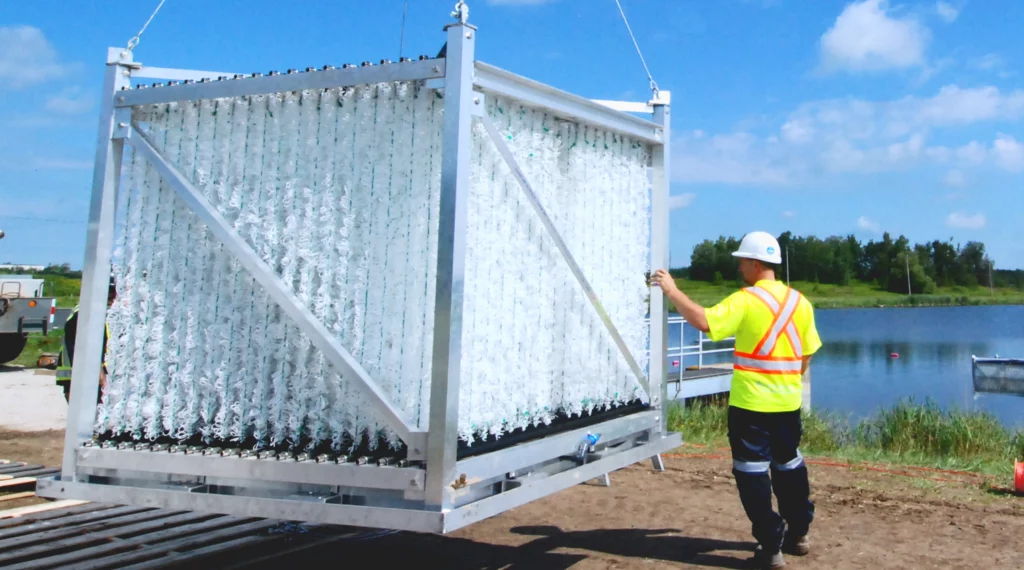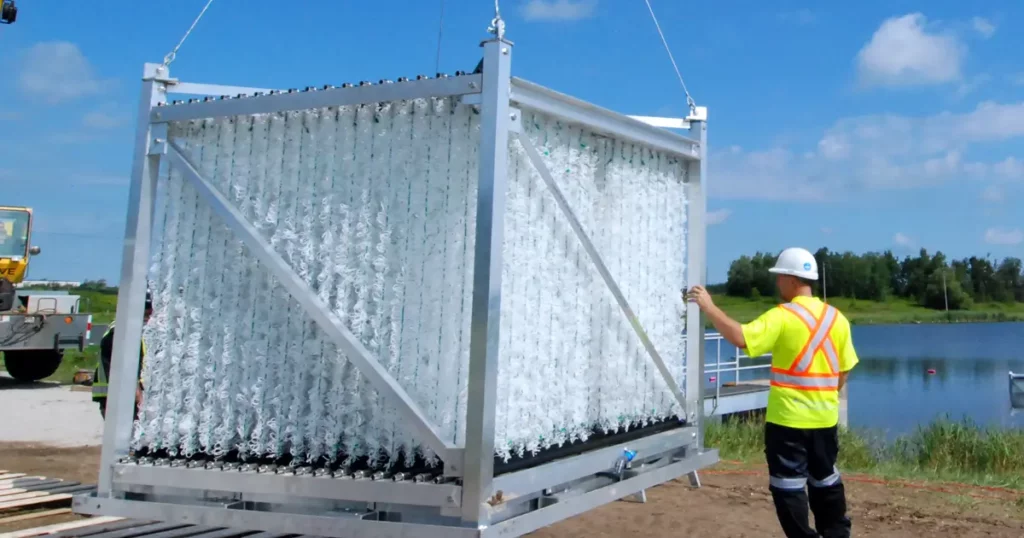
CASE STUDY
Innovative, low-energy treatment to remove contaminants from process wastewater and ML/ARD
Presented by Tyler Anderson, Senior Project Manager, at 2022 Tailings and Mine Waste Conference
Mines, whether active or non-operational, can generate significant volumes of wastewater from mineral extraction / processing and from surface water that infiltrates the mine and comes into contact with contaminants. Waste streams of particular concern are high strength ammonia and metal leaching/acid rock drainage (ML/ARD), which must be collected and treated to prevent adverse impacts to surface and groundwater resources.
Regulations limiting these contaminants continue to be strengthened, such as recent changes to Canada’s Metal and Diamond Mining Effluent Regulations (MDMER) that took effect in June 2021 and limit the monthly mean concentration of un-ionized ammonia in effluent discharge to 0.5 mg/L.
Tyler Anderson, our Senior Project Manager, presented a paper at the 2022 Tailings and Mine Waste Conference that introduced two of our simple, low-energy treatment technologies and provided case study examples where they have been cost-effectively installed and operated to address challenging waste streams from active and non-operating mines.
BioCord® Reactors prove their ability to improve cold-weather ammonia removal
He first covered BioCord Reactors, a fixed-film (biofilm) technology that can be installed directly into wastewater treatment ponds to improve cold-weather ammonia removal and enable a mine site to meet more stringent discharge limits and increase the discharge rate from the plant. Then, a case study was presented to illustrate the results of a containerized pilot system that operated at a gold mine from August to December 2021. The system operated in two phases, receiving influent from two different cells of the wastewater system. This allowed the pilot system to demonstrate cold-weather nitrification at highly variable ammonia loading rates. The BioCord system successfully demonstrated its ability to remove up to 80% of the influent ammonia and achieve compliance with MDMER.

BioCord demonstrated its ability to achieve and maintain cold-weather ammonia removal. The first phase of a full-scale system is shown during installation.
Geotube® dewatering systems simplify sludge management and enable permanent onsite storage
From there, Tyler presented two case studies about the permanent and long-term use of chemical conditioning and Geotube geotextile dewatering bags for solids capture and dewatering. This technology is particularly useful in situations where there is continuous and unpreventable drainage from resource extraction sites. These systems require little to no additional disturbance to existing sites and can accommodate a wide range of flowrates, covering seasonal fluctuations and thereby reducing the need for large pre- and post-treatment storage capacity. In some cases, the retained solids have proven to contain elevated concentrations of marketable compounds that can be considered a secondary benefit to utilizing these treatment systems.
One case study demonstrated the treatment of acid rock drainage using geotextile technology that has led to the recovery of valuable rare earth elements while preventing adverse impacts to downgradient waterbodies. A second similar case study described the collection and dewatering of sludge produced from the treatment of arsenic-laden groundwater that continually infiltrates a gold mine.

At left, an aerial view of the dewatering cell at the Omega Mine. At right, the third layer of Geotube containers shown in 2018.
Technical Paper
Innovative, low-energy treatment to remove contaminants from process wastewater and ML/ARD
Mines, whether active or non-operational, can generate significant volumes of wastewater from mineral extraction / processing and from surface water that infiltrates the mine and comes into contact with contaminants. Waste streams of particular concern are high strength ammonia and metal leaching/acid rock drainage (ML/ARD), which must be collected and treated to prevent adverse impacts to surface and groundwater resources.







